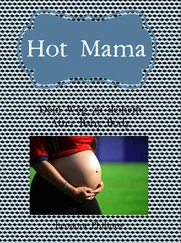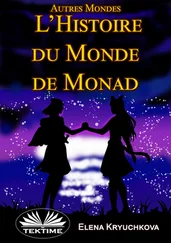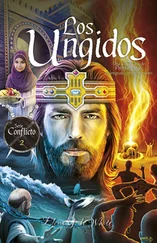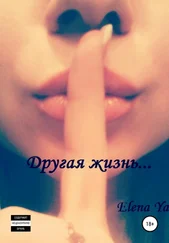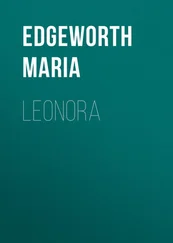‘I can’t see any of this.’
‘That’s because you yourself are a small white horse that has just tumbled over and is dying.’
‘Am I about to die?’
‘You live the death of the animals, for you are like them.’
‘So I am not about to die?’
‘Of course not! Remember the phrase you kept repeating to yourself when they took Max away: “I am not fated to die.” You are about to enter a dark country from where you will emerge transfigured.’
‘Tell me what to do in order to emerge!’ says Leonora suspiciously.
‘Be keen to get to the other side, like Caer, daughter of the lord of Connacht, who metamorphosed into a swan. So hurry up now, give me your arm, I’m in a hurry, Leonora, I’m in a very great hurry.’
‘If this is a holiday, what do you have to do?’
‘Paint a giantess.’

IN AMONG LEONORA CARRINGTON’S STORIES, Little Francis and The Stone Door , together with Memories from Below , one encounters three of the most important events in the artist’s life. Once more in House of Fear, A Flannel Night Shirt, The Oval Woman, The Hearing Trumpet and The Seventh Horse , Leonora appears entirely recognisable. In them it is possible to recognise the resemblances to Max and Leonora by Julotte Roche, herself a resident of St. Martin d’Ardèche and who interviewed the Ardechois villagers who had once lived alongside the two artists.
I started out to write a novel inspired by Leonora Carrington, but rather than compose a story that merely alluded to her, I decided to write directly about her and extend the homage started by Lourdes Andrade, a major scholar of Mexican Surrealism, who died on Thursday 26th October 2002, when she was run over by a drunken motorist in Chipalcingo, Guerrero. That day, the scholar was on her way to the launch of her book The Legends of the Wind’s Lover , on the subject of Carrington’s literary output. Lourdes was in the habit of walking in the Colonia Roma with Leonora and I set out to retrace that route by way of a tribute to the two of them.
Ever since the 1950s, extended over a long period of time, I visited and interviewed Leonora. She invited me over to dine on mole as black as the Lancashire coal mines, and Chiki and their two sons, Gaby and Pablo — still young children — kept us company. I also conducted several interviews with Kati Horna, for whom I maintain an immense respect, and with her daughter Norah. There followed the beautiful Alice Rahon, Gilberto Bosques, Gunther Gerzso, Fernando Gamboa, Malú Cabrera and Harry Block; Mathias Goeritz, Jesús Reyes Ferreira, Juan Soriano, Manuel Álvarez Bravo and Juan O’Gorman, together with Raoul and Carito Fournier; Inés Amor, Antonio Souza and Alejandro Jodoroswky; and then Renato Leduc and his daughter Patricia, who entrusted me with a letter from Leonora to her father, along with two previously unpublished photographs.
During the visits I paid Leonora over the last few years, I would try not to bother her with direct questions. She always began our conversations by asking, ‘Tell me what’s new in politics’, or else with a ‘How do you like the President?’ but I more often responded by telling her about my own childhood, the piano and the ballet lessons, or in good manners, relating anecdotes which prompted her recall of even the name of her French governess, Mlle. Varenne, or of her piano teacher, Mr. Richardson. Then she would say: ‘Tell me about your love life.’ She had no desire to discuss her own, and when I asked her whether Max Ernst had been the love of her life, she answered: ‘Every love is different, let’s not get too personal.’ The personal matter of which she did speak, with horror, throughout one entire afternoon was of her confinement in Santander and of the treatment she received there: ‘They’ve made Cardiazol illegal and I had three doses of it.’
I assured her I had arrived at the Calle Chihuahua on horseback, or else on the back of a goose or a dragon, and the idea used to entertain her. On occasion, I would tell her how an owl man or a comet’s tail had guided me to Insurgentes, the widest avenue in the city, to which she responded: ‘So, let’s go and see your comet’s tail,’ and we used to go out on to the street where we could watch a river of car headlamps passing by. Her magic transformed them into alchemical symbols and, through the car windows, strange figures emerged riding on kites.
Seeing Leonora has always been a privilege and a pleasure, for it takes me back to my own childhood, my parents, my origins, to the countries we had in common. She is a bewitching woman. They call her white, black or red, but what’s undoubtedly the case is that Leonora makes magic with every colour there is and that she is the most beautiful enchantress to have survived into our lifetimes. Three times over, she was sent to the inquisitors’ pyres in England, France and Spain. Yet every time she emerged purified by fire, until she became a slender rod of precious metal. She is the painter who most resembles her brushes. There are even those who say she is an artist who paints with her eyelashes.
Visit her house and you will always find a fiesta. I deem myself lucky to be near a human being and an artist who makes me want to inhabit a world I had some inkling of in my childhood, well before I lost my way on the track of becoming a journalist.
Only recently, Leonora and I went out to eat at Sanborn’s; Café Tacuba; Casa Lamm; and in Chimalistac. A while ago we ate at Isaac Masri’s house, and Leonora made Joy Laville, Carlos Monsiváis and me laugh by telling us we all have a tiny President Salinas de Gortari inside each one of us.
Monsiváis and I accompany her to numerous events in her honour at UNAM, the Sala Manuel M. Ponce de Bellas Artes, the Palacio de Minería, the José Luis Cuevas Museum, the Convent of Sor Juana and even to Los Pinos, where she received the National Art Prize.
Leonora illustrated my book, Lilus Kikus, and when I tried to return the original pictures to her, she smiled and told me: ‘You may keep them.’ They are now framed and hanging in Mérida, in the house of my daughter Paula. On another occasion, a couple of years ago, Leonora provided me with preliminary drawings both by herself and her son, Pablo, for Rondas de la Niña Mala . I think that the very last sketch she made was in fact for this same book, since she no longer paints, or even draws.
We always conversed in either English or French, which is why I decided not to translate her expressions literally in the original Spanish version of this book. I call it a novel, for it has no pretensions whatsoever to being a biography, but is instead a free approximation to the life of an exceptional artist.
As to the books I have most of all had recourse to, Villa Air-Bel, World War II, Escape and A House in Marseille , written with mastery and an open heart by Rosemary Sullivan, has shown itself indispensable for the manner in which it recounts the death of Walter Benjamin, or explains how Varian Fry of the American Rescue Committee saved the life of so many others, now that nobody any longer remembers his name.
On the other hand, books produced by North American writers Whitney Chadwick and Susan L. Aberth provide invaluable information, not to mention the analyses afforded by Marina Warner. I admired the interview with Paul de Angelis and, above all, the writing by Salomon Grimberg.
In like manner, the interviews graciously extended me by Leonora herself, Gaby and Pablo Weisz, Rosita and Max Shein, Ana Alexandra Gruen, brother and sister Miguel and Helen Escobedo, Pedro Friedeberg and Joanna Moorhead have all, in one way or another, proved indispensable.
Читать дальше



